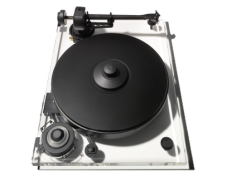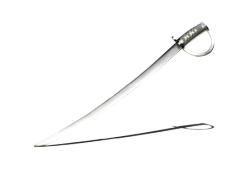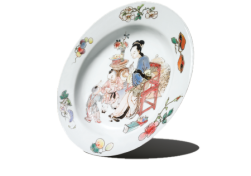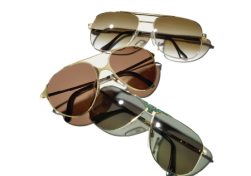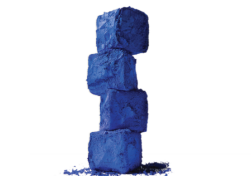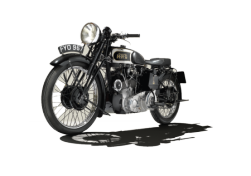There’s something magical about honey. It’s natural, created by one of nature’s more extraordinary alchemical processes – and it’s great on toasted sourdough. Small wonder that it is increasingly highly prized in a culinary world which obsesses over source and seasonality. Steve Benbow, who started the London Honey Company 14 years ago, points towards a new honey connoisseurship, whereby enthusiasts talk about the sticky nectar “in the same way we talk about different varietals of wine”. Thyme honey from Greece is very popular (“really dark and flavorsome”), while lime-blossom honey has floral, citrussy top notes. At The St. Regis San Francisco, bees are kept in rooftop hives and provide honey for the hotel, courtesy of executive chef Olivier Belliard. In the US one third of bees have disappeared since 2006, and in Europe it’s a similar story. So when considering a hive on your roof, remind yourself that it’s pro-planet as well as on-trend. Although for travelers, there is a sting in the tale. “Bees really do need your attention,” says Benbow. “I hardly have time for holidays.” thelondonhoneycompany.co.uk
When Led Zeppelin released remastered, deluxe editions of their first three albums this year, they weren’t just streamed digitally or produced on CD. They were released, too, as old-fashioned vinyl records: that circular mold of plastic that for decades had been the favored medium of thousands of music-mad teens. This is no anomaly: last year dozens of groups released both digital and analogue sounds, resulting in sales of more than 6 million vinyl albums in the American market alone (considerable growth given that fewer than 500,000 were sold in 1993). As you’d expect, a growth in vinyl also means a growth in sales of record players: both new and old. Music Direct, one of America’s biggest music retailers, reports selling thousands of models ranging in price from $249 to $30,000 – and more than 500,000 vinyl albums besides – last year. Why do they believe the resurgence is happening? Because children’s parents play CDs. And why would you want to use the medium enjoyed by your mother and father when you can handle the über-cool object revered by DJs? henleydesigns.co.uk
Some pop their bottle open, others twist. But there’s only one way to open champagne with true brio: beheading the bottle with a ceremonial saber. It is a practice with Napoleonic roots, and many saberagers even carry their own swords for the purpose. One such enthusiast, Nicolas Krafft, president and CEO of French silverware company Christofle says, “I have an extensive collection of antique sabers, and each has its own character”. So what’s the appeal to fans? “It’s the wonderful moment of anticipation before the saber connects with the bottle.” According to Tom Tuke-Hastings, founder of luxury company Henry Tuke, which offers a saber through Harrods in London priced at $46,000, “There are whole brotherhoods of sabering. It’s particularly popular with military fraternities.” Henry Tuke designed its saber to be a little shorter than a cavalry saber, forged it from stainless Damascus steel, and finished it with a solid-silver guard and shagreen grip. It claims the Guinness World Record for most bottles sabered in a minute: 35. And yes, that is a challenge. uk.christofle.com
This year at Sotheby’s in Hong Kong a 500-year-old Chinese ceramic known as a “chicken cup”, due to its decoration featuring a rooster, a hen and her chicks, sold for a record-breaking $36 million. This enhanced the sense of vertigo in the auctioneering world caused by a 2013 sale when a Song dynasty bowl went for $2.23 million (incredibly, this 1,000 year-old piece had been bought for $3 at a garage sale). Stacey Pierson, a specialist at the School of Oriental and African Studies in London, says, “The interest comes particularly from the Chinese.” But the tastes of enthusiasts are changing. “Qing Song Emperor-ware, which was extremely popular a few years ago and highly-decorated and blingy, is dying down,” she adds. Her current tip is for Song-period ceramics and for the muscular, earthier ware from the Yangshao culture in the Neolithic period. Collectors should be wary, however. “It’s a minefield. Pieces are hard to identify and there are many forgeries,” says Pierson. Which means that in southeast China’s “Porcelain Capital” Jingdezhen you’ll find plenty of fakes – while a flea market find in the West might yield the real thing. chinese-porcelain-art.com
Jacqueline Onassis was renowned for leading many fashion trends, but one item truly became her signature – those paparazzi-confounding, jet-setting sunglasses. Jackie O’s favorite “bug-eye” Nina Ricci 3203 shades are not only coveted by fashionistas from Lady Gaga to model Rosie Huntington-Whiteley, but are being reissued by the French fashion house and L’Amy America. Los Angeles can claim to be the vintage shades capital of the world, with specialists such as Russ Campbell’s Old Focals dressing the film industry. Also scouring yard sales and buying up “dead stock” from old optometrists around the world are the Vintage Frames Company in Montreal; Klasik in London; and Berlin’s Vintage Sunglasses: so enormous it’s become known as a sunglasses superstore. Vintage eyewear offers quality, durability and solid technology, which is why you’ll now hear the cool crowd talking of the classic shapes in reverent terms. Never before has it been so fashionable to look through old glass darkly. vintagesunglasseslondon.co.uk
There’s often a chasm between conceptual art and the rest of the world. But International Klein Blue (IKB), a colour devised in 1957 by French artist Yves Klein, is having a high-tide moment in couture and décor. IKB featured on Oprah, and since then fashion has pulsated with this fathomless indigo hue, with designers from Giorgio Armani and Jil Sander to Prada, Kenzo and Stella McCartney falling for it. You can even buy IKB sunglasses from Etnia Barcelona. Klein exhibited monochrome paintings, later patenting his formula and famously using it in his Anthropometries – filmed performances in which naked women rolled in IKB paint. Valeria McCulloch, also known as ValBlu, has worn IKB every day for the past 15 years and regards Klein as “a genius – the first artist to use a whole human being as a brush. Lots of designers have used IKB for inspiration: look at Yves St Laurent’s Jardin Majorelle in Morocco.” Part of IKB’s allure, she believes, is that deep blue has always been expensive. Ultramarine, made by grinding lapiz lazuli mined in Afghanistan, was prized in the Renaissance. And in the Christian tradition, dark blue has often denoted divinity.
There’s a reason why Jay Leno is crazy about pre-war motorbikes: so few survive from the period that those that do exist are highly prized and hugely collectable. In April 2014 the highest price ever achieved for a 1930s Brough Superior SS100 was reached at the Bonhams annual vintage motorcycle sale: £253,500, almost double its estimate. In April 2015, an even rarer machine will go under the hammer: the beautiful 1939 Vincent-HRD 998cc Series-A Rapide. This one, says Bonhams motorcycle expert Ben Walker, is “in concours condition, and one of those models that collectors and enthusiasts dream of: owned by one family since 1959, and the second-last ever to be produced”. Not all motorcycles are quite as good investments, according to Tennessee vintage bike broker Somer Hooker. “Buying a bike is like buying art,” he warns. “It’s worth buying something you like because you may have to live with it. People get tired of paper assets. It’s more fun to go out in the garage, see what you’ve got and take it for a ride.”

